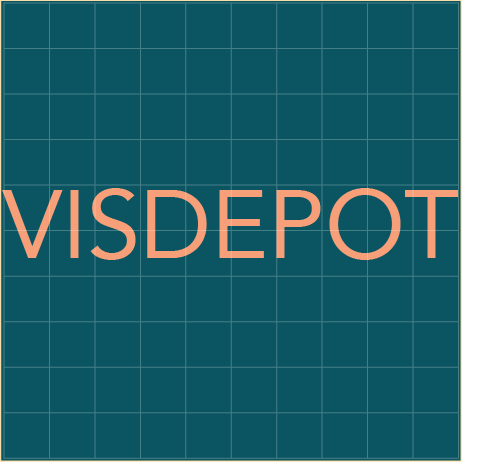Creating a Data Visualization Toolkit¶
To start developing a data visualization toolkit beyond data analysis/wrangling (i.e. the LibreOffice Calc, Excel, Python, or R) you might also want to consider tools for static prototyping and/or drawing as well as those various tools and libraries for visualization. Taking on more than one tool may seem like a lot for those starting out, but it can help avoid becoming too dependent on any one technology or resource.
This section will connect you with a few tools you might consider using for your next visualization project.
Note: “Traditional” in the below refers to tools for making the standard charts many think of, i.e. bar charts, line charts, pie charts & etc. “Creative” in the below refers to tools that particularly lend themselves to forms outside of those “traditional” chart styles. “Coding” versus “Non-Coding” in the below refers to whether or not you will need to know how to code to use that tool.
Traditional, Non-Coding¶
LibreOffice, Excel (not free), or Google Sheets can allow for the generation of simple charts.
Gephi is a tool for creating network graphs. Note: the Gephi site includes free tutorials.
Tableau (free for students) is a popular drag-and-drop style data visualization tool. Note: if you are not a student or employed somewhere that pays for a corporate Tableau package this can become costly.
RAWGraphs is a great alternative to Tableau, and is built on top of D3.JS and the visualizations can be later edited with a tool like Inkscape. Note: the RAWGraphs site includes free tutorials.
Google Data Studio allows you to create simple data visualization dashboards.
Creative, Non-Coding¶
Pen and Paper! See the “Making a Case for Data Sketching, Analog Visualization, and Prototyping” if you need to be convinced about hand-drawn work.
Inkscape or Adobe Illustrator (not free) Note: those using Illustrator might also be interested in ai2html for converting Illustrator files into HTML & CSS.
GIMP or Adobe Photoshop (not free)
Traditional, Coding Required¶
Python Altair, Bokeh, matplotlib, Plotly, and Seaborn
Vega and/or Vega-Lite These tools are built on top of D3.JS, which makes them look like the graphics that many are familiar with. Vega-Lite is useful for producing traditional visualizations that require little personalization. Vega has a bit more breadth in terms of options. Note: the Vega site includes free tutorials.
Read Further¶
Andy Kirk’s collection of visualization tools might be the most extensive list there is; however it might be an overwhelming list to peruse for those just starting out.
Jon Olav H. Eikenes’ article “Designing a Custom Data Visualisation” speaks usefully to using a ranging data visualization toolkit (R, Illustrator, and P5.JS) to create a visualization.
Note: I have provided additional materials on many of the above tools in the Additional Resources section in order to avoid cluttering this page.
